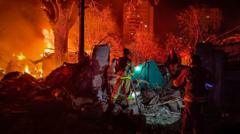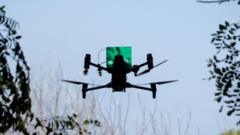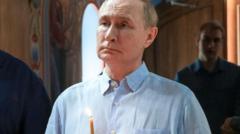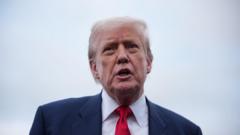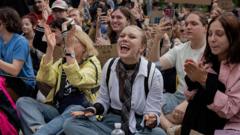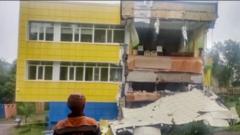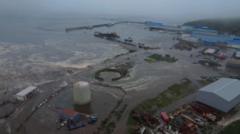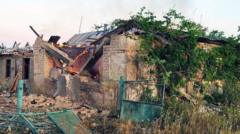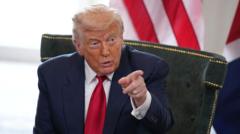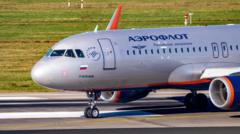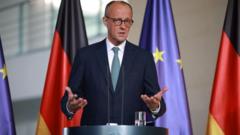On May 9th, 2025, Moscow hosted its most grandiose Victory Day Parade in years, featuring over 180 military vehicles and thousands of personnel to evoke national pride and assert Russia's military strength.
Putin Celebrates Russian National Pride with Massive Military Parade

Putin Celebrates Russian National Pride with Massive Military Parade
Russia's Victory Day Parade Showcases Military Might Amid Ongoing Conflict in Ukraine
On a bright and crisp morning in Moscow, the atmosphere was charged with patriotism as Russia commemorated the 80th anniversary of Soviet victory over Nazi Germany. The military parade on Red Square was a feat of both spectacle and symbolism, serving to reinforce national unity amid the ongoing conflict in Ukraine.
As over 11,500 troops marched in pristine formations, the metallic roar of more than 180 advanced military vehicles echoed down the famous cobblestones, illustrating Russia’s military capability. These included state-of-the-art artillery systems and armored vehicles actively deployed in the conflict in Ukraine, marking a decisive shift in the display of Russian military power since the conflict began.
The air was thick with pride as soldiers yelled “Hurrah!” and a fleet of bomber jets streaked through the sky, painting it in the colors of the Russian flag—red, white, and blue. Foreign dignitaries, including Egypt’s Foreign Minister Badr Abdelatty, expressed admiration for the impressive display, embodying the complex mix of national pride and international posturing that characterizes modern Russia.
The Victory Day celebration has historically been rooted in Soviet legacy, with the defeat of Nazi forces serving as a cornerstone of national identity since the dissolution of the Soviet Union in 1991. For many Russians, the memories of World War II continue to invoke deep-seated sentiments, intricately woven into the very fabric of national pride. As one of the few childhood memories scattered amidst the rubble of Soviet nostalgia, the author reflects on simpler Victory Day parades from their youth, offering a personal glimpse into a narrative shaped by history.
As Russia prepares to face the future, the spectacle serves to galvanize domestic support, presenting an unyielding image of strength to both allies and adversaries on the global stage. The parade exemplifies how history intertwines with contemporary politics, making it clear that the vestiges of the past remain alive and influential in shaping Russia's present and future ambitions.
As over 11,500 troops marched in pristine formations, the metallic roar of more than 180 advanced military vehicles echoed down the famous cobblestones, illustrating Russia’s military capability. These included state-of-the-art artillery systems and armored vehicles actively deployed in the conflict in Ukraine, marking a decisive shift in the display of Russian military power since the conflict began.
The air was thick with pride as soldiers yelled “Hurrah!” and a fleet of bomber jets streaked through the sky, painting it in the colors of the Russian flag—red, white, and blue. Foreign dignitaries, including Egypt’s Foreign Minister Badr Abdelatty, expressed admiration for the impressive display, embodying the complex mix of national pride and international posturing that characterizes modern Russia.
The Victory Day celebration has historically been rooted in Soviet legacy, with the defeat of Nazi forces serving as a cornerstone of national identity since the dissolution of the Soviet Union in 1991. For many Russians, the memories of World War II continue to invoke deep-seated sentiments, intricately woven into the very fabric of national pride. As one of the few childhood memories scattered amidst the rubble of Soviet nostalgia, the author reflects on simpler Victory Day parades from their youth, offering a personal glimpse into a narrative shaped by history.
As Russia prepares to face the future, the spectacle serves to galvanize domestic support, presenting an unyielding image of strength to both allies and adversaries on the global stage. The parade exemplifies how history intertwines with contemporary politics, making it clear that the vestiges of the past remain alive and influential in shaping Russia's present and future ambitions.


